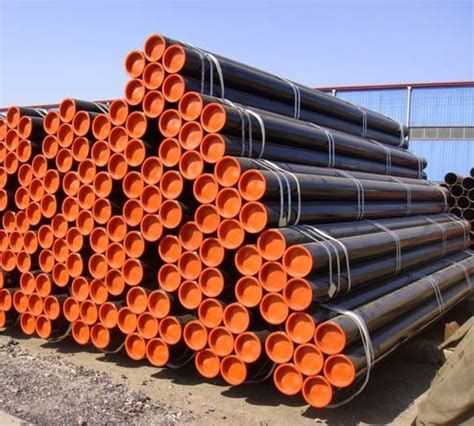
Carbon Steel Pipe Painting
Carbon steel pipe & tube is composed of iron and carbon alloy. Since the ferrite component will oxidize and rust due to contact with water, it is very important to protect the surface of carbon steel pipes from corrosion. Spray painting is one of the anti-corrosion measures for carbon steel pipelines. Painting carbon steel pipes serves several important purposes, including corrosion protection, aesthetics, and identification. Here are the key steps and considerations for painting carbon steel pipes.
Surface Preparation:
Proper surface preparation is crucial for paint adhesion. Clean the surface of the carbon steel pipes thoroughly to remove rust, dirt, grease, and other contaminants. Techniques such as abrasive blasting or sanding may be employed to achieve a clean and smooth surface.

Rust Removal:
If the pipes already have rust, it's essential to remove it before painting. Rust can compromise the adhesion of the paint and contribute to further corrosion. Use appropriate methods such as wire brushing, sanding, or chemical rust removers.
Priming:
Apply a primer designed for use on carbon steel surfaces. The primer enhances adhesion and provides a protective barrier against corrosion. Choose a primer that is compatible with the type of paint you plan to use.
Paint Selection:
Select a high-quality paint suitable for carbon steel and the environmental conditions to which the pipes will be exposed. Consider factors such as weather resistance, UV resistance, and chemical resistance if applicable. Common types of paints for carbon steel pipes include epoxy, polyurethane, or corrosion-resistant coatings.
Application Method:
Apply the paint using a suitable method, such as spray painting, brushing, or dipping. The chosen method depends on factors such as the size and location of the pipes. Ensure an even and consistent application to achieve a uniform finish.
Coating Thickness:
Adhere to the recommended coating thickness specified by the paint manufacturer. Applying the correct thickness is essential for achieving the desired protective properties. Insufficient coating thickness may lead to inadequate protection, while excessive thickness can result in issues like cracking.
Drying and Curing:
Allow sufficient drying and curing time between coats and after the final application. Follow the paint manufacturer's recommendations for temperature and humidity conditions during the drying and curing process.
Inspection and Quality Control:
Inspect the painted surface for any defects, uneven coverage, or imperfections. Ensure that the paint adheres properly and provides adequate coverage. Address any issues promptly to maintain the effectiveness of the protective coating.
Identification Markings:
Consider including identification markings on the painted surface, such as pipe size, specifications, or other relevant information. This is particularly important for pipes in industrial settings where clear identification is necessary.
Maintenance:
Regularly inspect the painted surface for signs of wear, damage, or corrosion. Perform touch-ups or repainting as needed to maintain the protective integrity of the coating.


